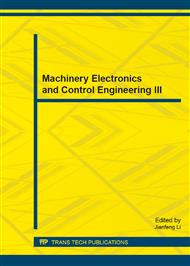p.286
p.291
p.295
p.300
p.304
p.312
p.318
p.324
p.328
Time-Domain Simulation of Power System Frequency Fluctuations Caused by Intermittent Wind Power
Abstract:
Wind power is uncertain. When the proportion of wind power capacity is large, the impact of the randomness of the output power on the grid frequency is more significant. Aiming at system stability influence after integrating a high capacity of wind turbines, this paper introduces the dynamic simulation model for electric power system with wind power, and makes an equivalent transformation processing for the wind turbine and generator. By using improved Euler method, this paper analyzes the impact of system frequency through time-domain simulation when disturbance occurs at wind farm side. Simulation results show that when wind speed changes, the established model and algorithm can effectively simulate the dynamic response of the frequency, and also these results can provide a reference for the frequency stability when wind turbines integrate into power system.
Info:
Periodical:
Pages:
304-311
Citation:
Online since:
December 2013
Authors:
Keywords:
Price:
Сopyright:
© 2014 Trans Tech Publications Ltd. All Rights Reserved
Share:
Citation:


